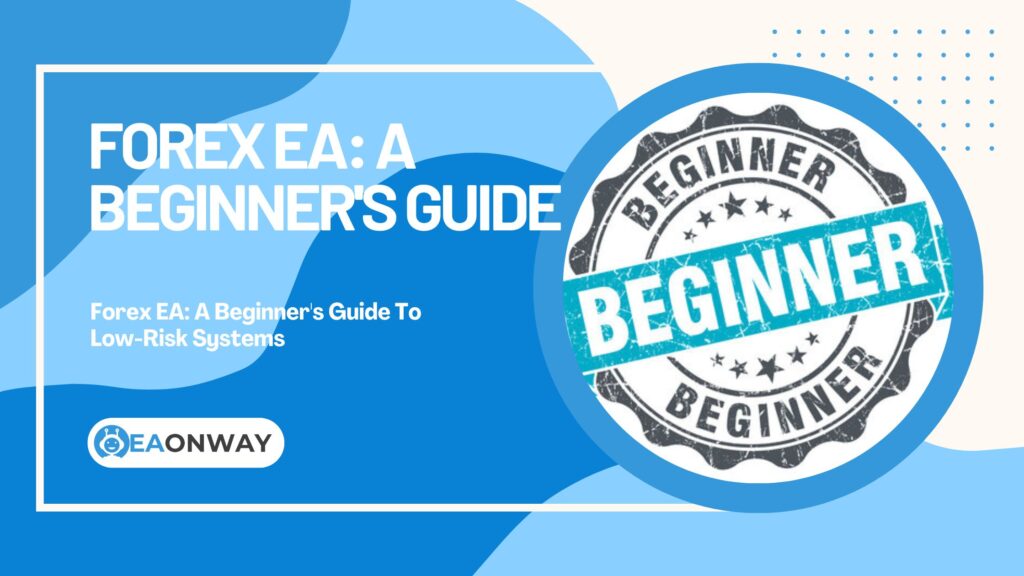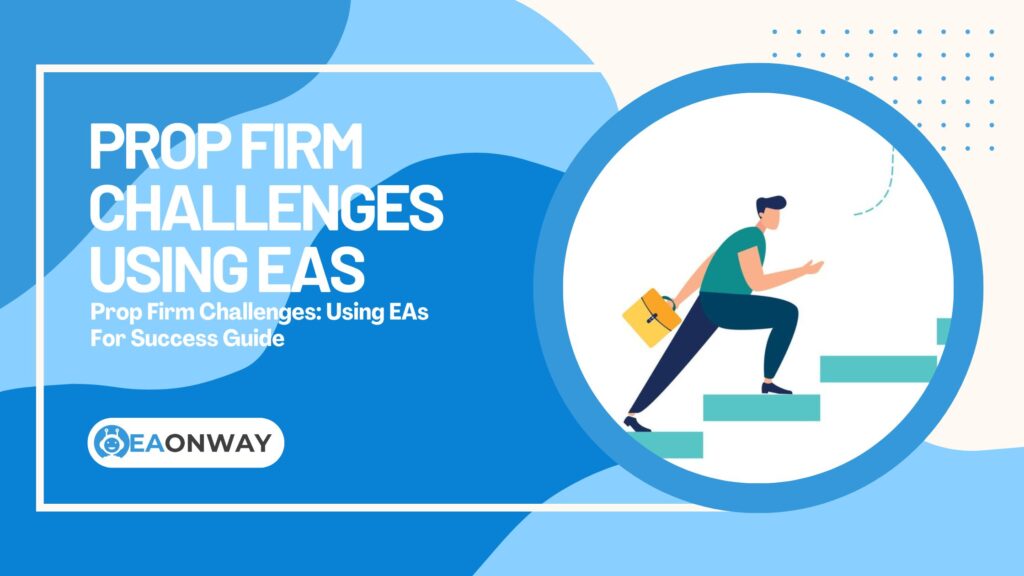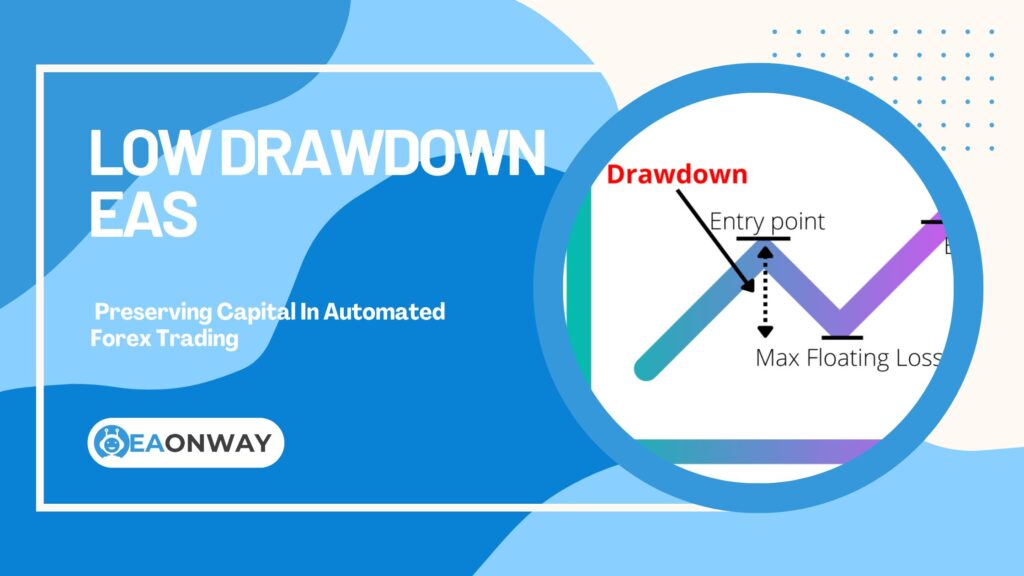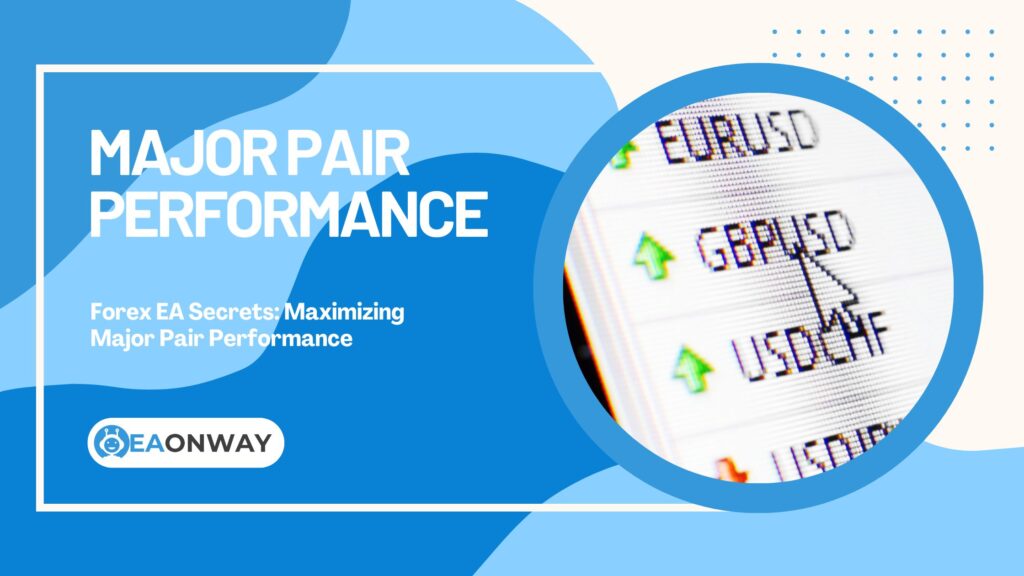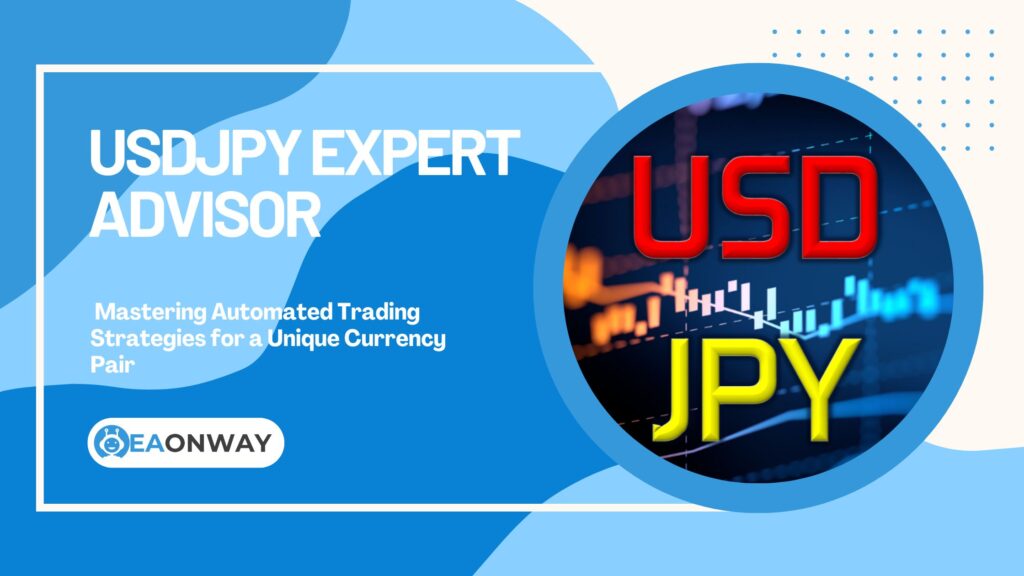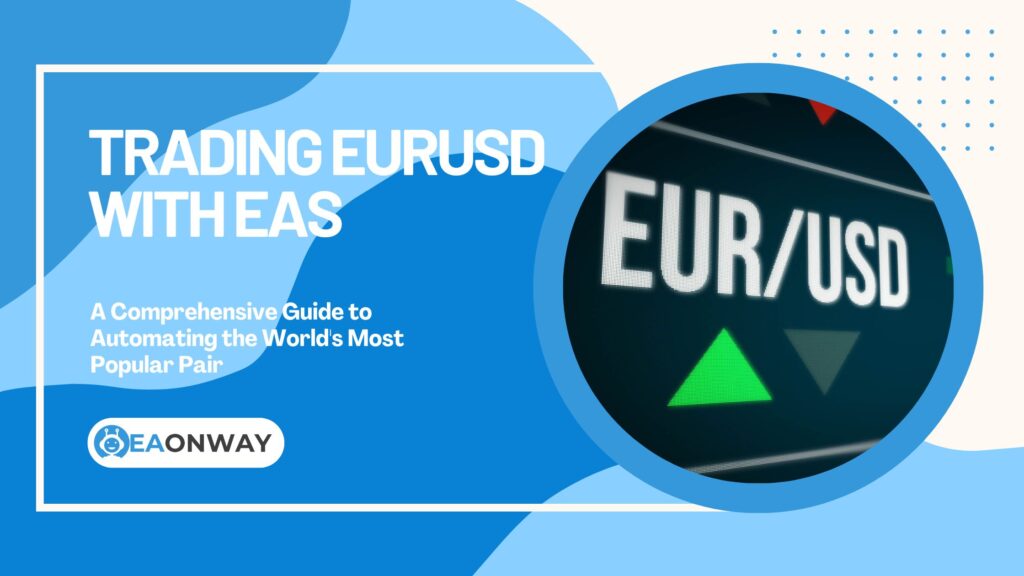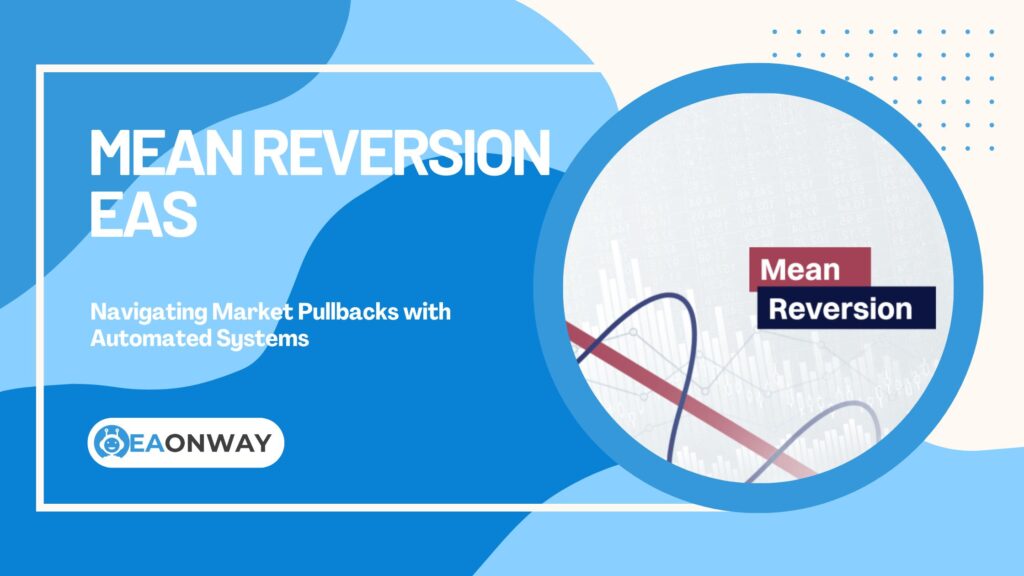Common EA Trading Strategies
GBPUSD Automated Trading: Strategies, Volatility, And EA Best Practices
GBPUSD Automated Trading: Strategies, Volatility, And EA Best Practices
Are you exploring GBPUSD automated trading and wondering how Expert Advisors (EAs) might fit into your approach to the Forex market? The allure of automated systems, particularly for a dynamic pair like GBPUSD, is understandable, given its significant daily movements and the potential for algorithmic strategies. Many traders, especially those with demanding schedules or who find emotional decision-making a challenge, look towards Forex EA solutions to navigate the complexities of currency trading.
This article delves into the world of automating trades on the GBPUSD currency pair, often nicknamed “Cable.” We aim to provide you with in-depth knowledge about how these automated trading systems, or Forex EAs, operate, particularly in the context of GBPUSD’s unique characteristics. You will learn about common strategies, the critical impact of volatility, and essential best practices for managing GBPUSD EAs. Crucially, we will focus on understanding the potential risks involved, helping you to approach automated trading with realistic expectations and a clear view of the challenges, rather than promises of easy profits. Our goal is to empower you with information, enabling a more informed perspective on Forex EAs for GBPUSD.
Key Insights on GBPUSD Automated Trading
Here’s a quick overview of what you need to know about automating your GBPUSD trades with Expert Advisors:
- Understanding GBPUSD EAs: These are software programs that automatically execute trades on the GBPUSD pair based on pre-set rules and trading signals, operating on platforms like MetaTrader 4 or MetaTrader 5.
- Volatility is Key: GBPUSD is known for its volatility, which can offer trading opportunities but also significantly increases risk for automated systems if not managed properly. As of May 2025, GBPUSD’s volatility rating stands at 0.38% according to TradingView data.
- Strategy Matters: Common strategies include trend-following, range trading, and news-based approaches, each with specific suitability for GBPUSD EAs. Current successful approaches emphasize quality over quantity with single-position trading rather than high-frequency methods.
- Backtesting is Crucial: Thoroughly testing an EA’s strategy on historical GBPUSD data is essential to gauge potential performance and identify weaknesses before live trading.
- Risk Management is Non-Negotiable: Implementing robust risk controls like stop-loss orders, position sizing, and drawdown limits is vital for preserving capital with any Forex trading bot, especially for GBPUSD.
- Continuous Monitoring: Even automated systems require ongoing oversight to ensure they perform as expected and to adapt to changing market conditions.
- No Guarantees: Past performance of a GBPUSD EA, even in backtests, does not guarantee future results. Unrealistic profit expectations are a common pitfall.
What Exactly Is Automated GBPUSD Trading?
Automated GBPUSD trading refers to the use of computer programs, commonly known as Expert Advisors (EAs) or Forex robots, to execute buy and sell orders on the GBP/USD currency pair without direct manual intervention for each trade. These programs run on trading platforms like MetaTrader 4 (MT4) or MetaTrader 5 (MT5) and follow a pre-defined set of rules and algorithms.
How Do GBPUSD Expert Advisors (EAs) Work?
A GBPUSD Expert Advisor operates by analyzing market data for the GBP/USD pair, identifying trading opportunities based on its embedded strategy, and then automatically placing, managing, and closing trades.
The core components of how a GBPUSD EA functions include:
- Pre-programmed Strategy: The EA is coded with a specific trading strategy. This could be based on technical indicators (e.g., moving averages, MACD, RSI), price action patterns, mathematical models, or even news sentiment analysis if designed for it.
- Market Analysis: The EA constantly monitors GBPUSD price movements, indicator values, and other relevant data points in real-time, as dictated by its algorithm.
- Signal Generation: When market conditions meet the predefined criteria of the EA’s strategy, it generates a trading signal (buy or sell).
- Trade Execution: Upon signal generation, the EA sends an order to the Forex broker via the trading platform to open a position. This includes setting parameters like entry price, lot size, stop-loss, and take-profit levels, if these are part of its logic.
- Trade Management: Once a trade is open, the EA can manage it according to its rules. This might involve trailing stops, adjusting take-profit levels, or closing parts of a position.
- Trade Closure: The EA will close the trade when exit conditions are met, such as reaching a take-profit or stop-loss level, or based on a counter-signal from its strategy.
- 24/5 Operation: Since the Forex market operates 24 hours a day, 5 days a week, an EA can theoretically trade around the clock, capitalizing on opportunities during different trading sessions (London, New York, Tokyo) without the trader needing to be physically present. This often necessitates the use of a Virtual Private Server (VPS) for EAs to ensure continuous operation.
The appeal for many IT professionals, engineers, and those in finance (non-trader roles) lies in the systematic, emotion-free execution that a well-programmed algorithmic trading GBPUSD system can offer. However, the effectiveness of any Forex EA GBPUSD heavily depends on the soundness of its underlying strategy and its adaptability to market dynamics.
Why is GBPUSD a Popular Pair for Automated Trading?
GBPUSD, or “Cable,” is a popular choice for automated trading due to its high liquidity, significant daily volatility providing frequent trading opportunities, and its tendency to trend, which many EAs are designed to capture.
Several factors contribute to its popularity among EA developers and users:
- High Liquidity: As one of the major currency pairs, GBPUSD boasts substantial trading volume. High liquidity generally translates to tighter spreads and more efficient trade execution, which is beneficial for automated systems that might trade frequently. According to the Bank for International Settlements (BIS) Triennial Central Bank Survey, GBP/USD is consistently one of the most traded currency pairs globally (Source: BIS Triennial Central Bank Survey of Foreign Exchange and Over-the-counter (OTC) Derivatives Markets).
- Volatility: GBPUSD is known for its relatively high volatility compared to some other major pairs. While this presents increased risk, it also creates more price movement and thus more potential trading setups that an EA can try to capitalize on. The average daily range can often exceed 100 pips, with a current volatility rating of 0.38% according to TradingView.
- Performance Trend: GBPUSD has shown positive performance, with a +5.88% year-to-date increase as of May 2025 (Source: Oanda), making it attractive for algorithmic systems designed to capture trending movements.
- Responsiveness to News: The pair is highly sensitive to economic data releases from both the UK (e.g., Bank of England announcements, inflation data) and the US (e.g., Federal Reserve statements, Non-Farm Payrolls). Some EAs are specifically designed to trade around such high-impact news events, while others incorporate news filters to avoid periods of extreme, unpredictable volatility.
- Technical Analysis Suitability: GBPUSD price action often respects key technical levels, chart patterns, and indicator signals, making it a pair that many technical analysis-based EAs are designed for.
- Optimal Trading Hours: The highest liquidity and best trading opportunities for GBPUSD occur during the London and New York sessions overlap, providing a specific window where many EAs are programmed to be most active.
- Availability of Resources: Due to its popularity, there’s a wealth of information, historical data, and community discussion surrounding GBPUSD trading strategies, which can be helpful for those developing or selecting EAs.
However, it’s crucial to remember that these same factors, especially volatility and news sensitivity, also make GBPUSD a challenging pair to automate successfully. What provides opportunity also brings significant risk.
Understanding GBPUSD Volatility and Its Impact on EAs
GBPUSD volatility refers to the degree of variation in its exchange rate over time; higher volatility means larger and more frequent price swings. This characteristic significantly impacts EA performance, as strategies must be robust enough to handle sudden market movements without incurring excessive losses.
What Drives GBPUSD Volatility?
Several key factors drive the volatility of the GBPUSD pair:
- Economic Data Releases: Major economic indicators from both the UK and the US are primary drivers. These include:
- Interest Rate Decisions: Announcements from the Bank of England (BoE) and the U.S. Federal Reserve (Fed).
- Inflation Reports: Consumer Price Index (CPI) and Producer Price Index (PPI).
- Employment Data: UK unemployment figures, Average Earnings Index, and US Non-Farm Payrolls (NFP).
- GDP Growth Rates: Quarterly and annual Gross Domestic Product figures.
- Retail Sales: Indicate consumer spending health.
- Manufacturing and Services PMI: Purchasing Managers’ Indexes reflecting industry sentiment.
- Central Bank Policies and Speeches: Monetary policy statements, forward guidance, and speeches by central bank governors (e.g., BoE Governor, Fed Chair) can cause sharp market reactions. Unexpected comments or shifts in tone are particularly impactful.
- Geopolitical Events: Political instability, elections, trade negotiations, and global geopolitical tensions can significantly influence investor sentiment and thus the GBPUSD exchange rate.
- Market Sentiment: Broader risk appetite in global markets can affect GBPUSD. During “risk-on” periods, investors might favor higher-yielding currencies, while “risk-off” sentiment can drive flows into perceived safe havens like the USD.
- Intermarket Correlations: Movements in other financial markets, such as commodities (especially oil) or major stock indices, can sometimes have a spillover effect on currency pairs, including GBPUSD.
This currency pair volatility analysis is crucial for any automated forex strategies targeting Cable.
How Does High Volatility Affect EA Performance?
High volatility in GBPUSD can be a double-edged sword for Expert Advisors, potentially leading to both increased opportunities and heightened risks.
Positive impacts can include:
- More Trading Opportunities: Volatile markets generate more price swings, which can trigger more signals for EAs, especially those designed for breakout or momentum strategies.
- Faster Profit Realization: Strong, quick moves can help trades reach profit targets faster, assuming the EA is on the right side of the move.
However, the negative impacts are often more significant and require careful management:
- Increased Risk of Slippage: During high volatility, especially around news releases, the price at which an EA attempts to execute a trade can differ significantly from the actual executed price. This difference is known as slippage in forex trading, and it can erode profits or increase losses. For example, a study by a major brokerage might indicate that slippage is more prevalent during the first few minutes after a high-impact news release like NFP [Data Check Needed: Brokerage study on slippage during news – Direct Link Not Found].
- Wider Spreads: Brokers may widen spreads (the difference between bid and ask prices) during volatile periods to mitigate their own risk. This increases the cost of trading for EAs, potentially making some strategies unprofitable.
- Stop-Losses Triggered Prematurely: Sharp, erratic price spikes (whipsaws) common in volatile conditions can trigger stop-loss orders even if the overall market direction eventually favors the trade. This can lead to a series of small losses.
- Difficulty for Certain Strategies: Range-bound or mean-reversion EAs may struggle in highly volatile, trending markets, as breakouts can lead to significant losses if the EA is designed to trade within a defined range.
- Increased Drawdown Potential: Larger price swings inherently mean that if a trade goes against the EA, the potential drawdown (the peak-to-trough decline in account value) can be more substantial and occur more rapidly. Effective drawdown control for EAs is paramount.
Therefore, EAs designed for GBPUSD must have built-in mechanisms to handle or adapt to its characteristic volatility, such as dynamic stop-loss adjustments, news filters, or volatility-based entry/exit criteria.
Common Automated Trading Strategies for GBPUSD EAs
Various automated trading strategies can be applied to GBPUSD EAs, each with its own logic and suitability depending on market conditions. Popular approaches include trend-following, range trading (counter-trend), breakout strategies, and news-based trading.
What Are Trend-Following Strategies for GBPUSD EAs?
Trend-following strategies for GBPUSD EAs aim to identify the prevailing market direction (uptrend or downtrend) and enter trades in that same direction, holding them until the trend shows signs of reversal or exhaustion.
These EAs typically use technical indicators like:
- Moving Averages (MAs): Crossovers of different period MAs (e.g., 50-period MA crossing above 200-period MA for a buy signal) are common. Recent successful GBPUSD approaches in 2025 utilize the 50 and 200 moving averages combined with support/resistance levels to capture the current bullish market trend.
- Average Directional Index (ADX): Used to measure trend strength. An ADX value above a certain level (e.g., 25) might confirm a strong trend.
- Parabolic SAR: Provides potential entry and exit points based on a trailing stop that follows the trend.
- Donchian Channels or Bollinger Bands: Breakouts above or below these bands can signal the start or continuation of a trend.
Rationale: GBPUSD often exhibits sustained trends, especially on higher timeframes. Trend-following EAs try to capture the bulk of these major moves.
Example: An EA might buy GBPUSD when the 50-EMA crosses above the 200-EMA on a 4-hour chart, with a stop-loss below a recent swing low and a take-profit based on a risk-reward ratio or a trailing stop.
Advantages: Can yield significant profits if a strong trend develops.
Disadvantages: Prone to whipsaws and losses during consolidating or range-bound market conditions where clear trends are absent.
Important Note: Defining clear trend identification rules and robust exit strategies (to lock in profits or cut losses when a trend ends) is critical for the success of these Forex trading bots GBPUSD.
How Do Range Trading (Counter-Trend) EAs Work on GBPUSD?
Range trading EAs for GBPUSD operate on the assumption that the price will often fluctuate between identifiable support and resistance levels, attempting to sell near resistance and buy near support.
Key elements include:
- Identifying Support and Resistance: EAs may use indicators like Bollinger Bands, Keltner Channels, Pivot Points, or oscillators like the Relative Strength Index (RSI) and Stochastic Oscillator to identify overbought/oversold conditions indicative of potential range boundaries.
- Entry Signals: A sell signal might occur when price nears the upper band of a channel and an oscillator shows an overbought reading. A buy signal would be the opposite.
Rationale: Even within larger trends, GBPUSD often experiences periods of consolidation or sideways movement where prices oscillate within a definable range.
Example: An EA might identify a range on the 1-hour chart. If GBPUSD approaches the upper boundary of this range and the RSI is above 70 (overbought), the EA might initiate a short (sell) trade, targeting the lower boundary of the range, with a stop-loss placed just above the resistance.
Advantages: Can be profitable in choppy, non-trending markets where trend-following systems struggle.
Disadvantages: Highly risky if a strong breakout occurs against the EA’s position, as counter-trend trades go directly against momentum. Strict stop-losses are essential.
Important Note: Accurately identifying true range boundaries and differentiating them from the early stages of a new trend is a significant challenge for these automated forex strategies.
Can Breakout Strategies Be Automated for GBPUSD?
Yes, breakout strategies for GBPUSD can be automated by EAs designed to enter trades when the price decisively moves beyond a key support or resistance level, or outside a defined consolidation pattern, anticipating continued movement in the breakout direction.
These EAs look for:
- Consolidation Patterns: Identifying periods of low volatility or price compression (e.g., triangles, flags, tight ranges).
- Volume Confirmation (Optional): Some EAs might look for an increase in trading volume accompanying the breakout as confirmation.
- Entry Triggers: A buy order is placed when price breaks above a resistance level, and a sell order when it breaks below support.
Rationale: Breakouts often signal the start of a new trend or a significant acceleration of an existing one.
Example: If GBPUSD has been trading in a 50-pip range for several hours, a breakout EA might place a buy stop order a few pips above the range high and a sell stop order a few pips below the range low. Whichever is triggered initiates the trade.
Advantages: Can catch the beginning of strong, fast moves, potentially leading to quick profits.
Disadvantages: Susceptible to “false breakouts” where price breaks a level only to quickly reverse, leading to losses. Volatility spikes can trigger premature entries.
Important Note: Setting appropriate distances for entry orders beyond the breakout level and implementing effective trade management (e.g., trailing stops) are key to managing the risks of false breakouts in these GBPUSD price action strategies.
Are News-Based Trading EAs Viable for GBPUSD?
News-based trading EAs for GBPUSD are designed to trade on the volatility spikes and directional moves that often follow major economic news releases. However, they are complex and carry very high risk.
Two main approaches exist:
- Trading the Initial Spike: Attempting to capture the immediate, rapid price movement right after a news release. This is extremely risky due to slippage, widened spreads, and extreme volatility.
- Trading the Post-News Drift/Retracement: Waiting for the initial chaos to subside and then trading a more sustained, secondary move or a retracement of the initial spike.
Rationale: Significant economic news (e.g., NFP, interest rate decisions) can cause large, rapid price changes in GBPUSD.
Example (Post-News Drift): An EA might be programmed to avoid trading 15 minutes before and after a high-impact UK news release. Then, 15 minutes after the release, if a clear directional bias has formed and volatility has somewhat stabilized, it might enter in the direction of that bias.
Advantages: Potential for very quick, large profits if the EA correctly anticipates and navigates the news-driven move.
Disadvantages:
* Extreme Volatility: Makes precise execution difficult.
* Slippage & Spreads: Can severely impact profitability. Execution can be far from the intended price. Broker execution quality is paramount.
* Whipsaws: News can cause prices to spike in both directions before settling.
* Data Feed Latency: Requires very fast data feeds and execution.
* Complexity: Accurately interpreting news impact algorithmically is challenging. Many “news EAs” are simplistic and prone to failure.
Important Note: Trading GBPUSD news with an EA is generally considered an advanced and high-risk endeavor. Many traders prefer EAs with news filters that avoid trading during such periods. Regulatory bodies like the Financial Conduct Authority (FCA) in the UK often warn about the risks of trading highly volatile events (Source: FCA Website on Forex Risks – General Information).
Best Practices for Using and Managing GBPUSD EAs
Effectively using and managing GBPUSD Expert Advisors requires more than just installing them; it involves diligent setup, continuous monitoring, robust risk management, and realistic expectations to navigate the complexities of automated trading.
What is the Importance of Choosing the Right Broker?
Choosing the right broker is critical for GBPUSD EA performance because broker-specific factors like execution speed, spread stability, slippage rates, and server reliability directly impact an EA’s ability to trade effectively and profitably.
Consider these factors:
- Execution Speed and Quality: EAs, especially scalping or high-frequency strategies, rely on fast and precise order execution. Delays or frequent requotes can turn a profitable strategy into a losing one. Look for brokers with a reputation for low-latency execution.
- Spreads and Commissions: Low, stable spreads on GBPUSD are crucial. High or variable spreads, especially during volatile times, can significantly eat into an EA’s potential profits. Compare typical and worst-case spreads.
- Slippage: While some slippage is unavoidable in fast markets, excessive or consistently negative slippage is a red flag. Inquire about the broker’s slippage policy.
- Server Reliability (Uptime): The broker’s trading servers must be stable and reliable. Frequent disconnections can interrupt EA operation and lead to missed trades or mismanagement of open positions.
- Regulation: Choose a broker regulated by a reputable authority (e.g., FCA in the UK, ASIC in Australia, CySEC in Cyprus). This provides a degree of security and recourse.
- Platform Stability: Ensure the broker offers a stable MetaTrader 4 or MetaTrader 5 platform implementation, as this is where your EA will run.
- Swap Rates: For EAs that hold trades overnight, consider the swap rates (interest paid or earned for holding positions).
- Minimum Deposit & Leverage: Ensure these align with your trading capital and risk management plan. Be cautious with excessive leverage.
Why is a Virtual Private Server (VPS) Recommended for EAs?
A Virtual Private Server (VPS) is highly recommended for running Forex EAs because it ensures the trading platform (and thus the EA) operates 24/7 without interruption from local computer issues, power outages, or internet connectivity problems, which is crucial for consistent algorithmic trading GBPUSD.
Key benefits of using a VPS for EAs include:
- Continuous Operation: EAs need to run constantly to monitor markets and execute trades, especially for pairs like GBPUSD that are active across different global sessions. A VPS runs your MT4/MT5 platform around the clock.
- Reduced Latency: Many VPS providers have servers located in data centers close to brokers’ trading servers. This can reduce latency (the delay in data transmission), leading to faster trade execution, which is critical for certain EA strategies.
- Reliability: VPS services typically offer high uptime guarantees (e.g., 99.9%), minimizing the risk of your EA going offline due to local PC crashes, power cuts, or internet disruptions at home.
- Accessibility: You can access your trading platform and EA running on the VPS from any device with an internet connection.
- Security: Reputable VPS providers offer secure environments for your trading activities.
- Avoids Local Resource Strain: Running an EA, especially multiple EAs or on many charts, can be resource-intensive for a home computer. A VPS handles this load.
While not strictly mandatory, a VPS significantly enhances the reliability and potential effectiveness of an automated trading system.
How Should You Monitor and Adjust Your GBPUSD EA?
Continuous monitoring and periodic adjustment of your GBPUSD EA are essential because market conditions change, and an EA that performed well in the past may not continue to do so without oversight and fine-tuning.
Effective monitoring involves:
- Regular Performance Review: Check key metrics like profit/loss, drawdown, win rate, and average win/loss size at least weekly, if not daily.
- Trade Log Analysis: Review the EA’s trade history. Are entries and exits aligning with the strategy’s logic? Are there unexpected behaviors?
- Equity Curve Monitoring: A steadily rising equity curve is ideal. Plateaus or declines warrant investigation.
- Comparison with Backtests: How does live performance compare to backtested expectations? Significant deviations need to be understood.
- Checking for Errors: Monitor the “Experts” and “Journal” tabs in MetaTrader for any error messages or connectivity issues.
- Awareness of Market Conditions: Be aware of major news events or shifts in GBPUSD volatility that might impact your EA’s strategy. For example, an EA optimized for ranging markets might need to be paused during a strong, news-driven breakout.
- Periodic Re-Optimization (with caution): If performance degrades consistently over time, and it’s not due to temporary market conditions, re-optimizing EA parameters on recent data might be considered. However, this should be done cautiously to avoid curve-fitting.
- Knowing When to Stop: Have a predefined point (e.g., maximum drawdown level) at which you will stop the EA to reassess its viability.
Automated trading is not “set and forget.” It requires active management and a willingness to intervene or adjust when necessary.
The Essentials of Backtesting and Optimizing GBPUSD EAs
Thorough Forex EA backtesting and careful optimization are fundamental steps before deploying any Expert Advisor with real capital, especially for a volatile pair like GBPUSD. These processes help gauge an EA’s potential viability and refine its parameters.
What is Forex EA Backtesting and Why is it Critical?
Forex EA backtesting is the process of simulating an Expert Advisor’s trading strategy on historical price data to assess how it would have performed in the past. It is critical because it provides insights into the EA’s potential profitability, risk characteristics (like drawdown), and overall robustness before risking real money.
Key aspects of backtesting include:
- Historical Data Quality: Accurate and comprehensive historical data (including spread data if possible, for more realistic results) is essential. The MetaTrader Strategy Tester allows backtesting but quality of data can vary. Many professional traders acquire high-quality tick data for more precise backtests.
- Testing Period: The backtest should cover a significant period, ideally encompassing various market conditions (trending, ranging, volatile, quiet). For GBPUSD, this might mean several years of data.
- Parameters Tested: The EA’s input parameters are set, and the strategy is run over the historical data.
- Performance Metrics: The output includes metrics like:
- Total Net Profit
- Profit Factor (Gross Profit / Gross Loss)
- Maximal Drawdown
- Total Trades, Winning Trades, Losing Trades
- Average Win/Loss
Why Critical?
- Strategy Validation (Initial): Provides a first pass at whether a strategy has any historical merit.
- Risk Assessment: Helps understand potential drawdown and losing streaks.
- Parameter Understanding: Shows how different input settings affect performance.
- Identifying Flaws: Can reveal weaknesses in the EA’s logic under certain market conditions.
However, it’s vital to understand that past performance in backtests is not a guarantee of future results. Markets evolve, and historical conditions may not repeat.
How Do You Interpret GBPUSD EA Backtesting Results?
Interpreting GBPUSD EA backtesting results involves looking beyond just the net profit and considering a range of metrics to get a holistic view of the EA’s potential behavior and risk profile.
Key metrics and their interpretation:
- Total Net Profit: The overall profitability. While important, it shouldn’t be the sole focus.
- Profit Factor: Gross profit divided by gross loss. A value above 1 means the EA made more than it lost. Generally, a profit factor above 1.5 is considered decent, but this varies.
- Maximal Drawdown: The largest peak-to-trough percentage decline in equity during the test. This is a crucial indicator of risk. A high drawdown (e.g., >30-40%) might be unacceptable for many traders, regardless of profit.
- Relative Drawdown: Similar to maximal drawdown but often expressed as a percentage of the account balance.
- Total Trades: A very low number of trades might suggest the results are not statistically significant or the EA is too selective. Too many trades might indicate over-trading or high transaction costs.
- Win Rate (% Profitable Trades): The percentage of trades that closed in profit. A high win rate isn’t always necessary if average wins are much larger than average losses.
- Average Win / Average Loss Ratio (Risk/Reward Ratio): This shows if winning trades are, on average, larger than losing trades.
- Sharpe Ratio (if available): Measures risk-adjusted return. Higher is generally better.
- Equity Curve: Visually inspect the equity curve. Is it smooth and consistently rising, or erratic with large dips? A volatile equity curve indicates inconsistent performance.
Important Considerations:
- Curve Fitting: Be wary if the EA shows stellar results on one specific dataset but performs poorly on out-of-sample data. This indicates over-optimization.
- Modeling Quality: In MetaTrader, aim for 99.90% modeling quality if using tick data. Lower quality (e.g., “control points”) can give misleading results.
What is EA Optimization and How Should It Be Approached?
EA optimization is the process of systematically testing different combinations of an Expert Advisor’s input parameters over historical data to find the set that yields the best performance according to predefined criteria (e.g., maximizing profit factor or minimizing drawdown).
It should be approached cautiously:
- Define Objective: What are you trying to achieve (e.g., highest profit, lowest drawdown, best risk-adjusted return)?
- Select Parameters to Optimize: Not all parameters need optimization. Focus on those most likely to impact performance based on the strategy’s logic.
- Set Parameter Ranges and Steps: Define realistic start, end, and step values for each parameter being optimized.
- Use a Robustness Test (e.g., Walk-Forward Optimization):
- Standard Optimization: Finds the best parameters for the entire historical data period. This is prone to curve-fitting.
- Walk-Forward Optimization (WFO): A more robust method. The data is divided into segments. The EA is optimized on one segment (in-sample) and then tested on the next unseen segment (out-of-sample). This process is repeated. Consistent performance across multiple out-of-sample periods suggests a more robust EA. [Data Check Needed: Academic papers on Walk-Forward Optimization benefits – Direct Link Not Found but concept is widely discussed in quantitative finance literature].
- Avoid Over-Optimization (Curve Fitting): This is a major pitfall where parameters are so finely tuned to past data that the EA loses its ability to adapt to new, unseen market conditions. Signs include:
- Extremely specific parameter values (e.g., MA period 17 instead of a more rounded 15 or 20).
- Vastly different optimal parameters for slightly different time periods.
- Poor performance on out-of-sample data or forward tests.
- Forward Testing (Demo Account): After backtesting and optimization, run the EA on a demo account with live market feeds for a period (e.g., 1-3 months) to see how it performs in real-time conditions before committing real capital. This is a crucial validation step for your MQL5 or MQL4 based system.
Optimization is a tool, not a magic wand. Its goal is to find robust parameter sets, not to force a losing strategy to look profitable on paper.
Understanding and Mitigating Risks in Automated GBPUSD Trading
Automating GBPUSD trades with EAs, while offering potential benefits like emotionless execution and 24/7 operation, comes with significant inherent risks. Understanding these risks and implementing strategies to mitigate them is paramount for anyone considering this approach.
What Are the Primary Risks of Using GBPUSD EAs?
The primary risks of using GBPUSD EAs include market risk, technical failures, EA-specific flaws, over-optimization, and the psychological risk of relying too heavily on automation without understanding its limitations.
Key risks detailed:
- Market Risk: This is the inherent risk of loss due to adverse price movements in the GBPUSD pair. No EA can eliminate this. Sudden, unexpected events (e.g., “black swan” events, major political upsets) can cause extreme volatility that even well-designed EAs might struggle with.
- Technical Failures:
- Platform/Broker Issues: Server outages, platform freezes, or internet connectivity problems (if not using a reliable VPS for EAs) can disrupt EA operations, leading to missed trades or inability to manage open positions.
- VPS Failure: While generally reliable, VPSs can also experience downtime.
- Software Bugs: The EA itself (often coded in MQL4 or MQL5) or the trading platform could have bugs that cause erratic behavior.
- EA-Specific Flaws:
- Poor Strategy Logic: The underlying trading strategy of the EA might be fundamentally flawed, poorly conceived, or not suited for current GBPUSD market dynamics.
- Curve Fitting: The EA might be over-optimized to past data, making it perform well in backtests but fail in live trading conditions. This is a common issue with many commercial EAs.
- Lack of Adaptability: Markets change. An EA designed for a specific market regime (e.g., strong trending) may perform poorly when that regime shifts (e.g., to ranging).
- Execution Risks:
- Slippage: As mentioned, especially during volatile GBPUSD news events, the executed price can differ from the intended price, negatively impacting results.
- Wide Spreads: Brokers may widen spreads significantly during high volatility or low liquidity periods, increasing trading costs for the EA.
- Over-reliance and Complacency: Users might become complacent, assuming the EA will manage everything perfectly. Lack of monitoring can lead to small problems escalating into large losses.
- Unrealistic Expectations: Many users approach EAs with the expectation of quick, easy profits, often fueled by misleading marketing. This can lead to disappointment and poor decision-making.
- Cost of EAs: Some commercial EAs can be expensive, and this cost needs to be recouped through profits, adding to the performance pressure. Free EAs may lack support or be poorly coded.
How Can You Implement Effective Risk Management for Automated Trading?
Effective risk management for automated GBPUSD trading involves setting predefined limits on potential losses per trade and overall, managing leverage prudently, and ensuring your EA incorporates sound risk control mechanisms.
Key strategies include:
- Position Sizing:
- Fixed Lot Size: Using the same lot size for every trade. Simpler, but doesn’t adapt to account size changes.
- Fixed Fractional (Percentage Risk): Risking a small, fixed percentage of your account equity on each trade (e.g., 1-2%). This is generally a preferred method as it adjusts trade size based on account growth or decline. For instance, risking 1% on a $10,000 account means risking $100 per trade. If the account grows to $11,000, 1% risk becomes $110. The CFTC (Commodity Futures Trading Commission) in the US often highlights the risks of overleveraging in retail forex (Source: CFTC Customer Advisories on Forex).
- Stop-Loss Orders: Every trade executed by the EA must have a stop-loss order. This predefines the maximum acceptable loss for that trade. The placement of the stop-loss should be logical based on the EA’s strategy and GBPUSD volatility.
- Take-Profit Orders: While not strictly a risk management tool for limiting losses, take-profit orders help in securing profits when a target is met.
- Maximum Drawdown Control for EAs:
- EA-Level: Some EAs have built-in parameters to stop trading if a certain daily, weekly, or overall drawdown percentage is reached.
- Account-Level: You should have a personal threshold for the maximum drawdown you are willing to tolerate on your entire account. If this is breached, stop the EA and reassess.
- Limiting Leverage: While brokers may offer high leverage, using excessive leverage amplifies both potential profits and, more critically, potential losses. Use leverage cautiously and ensure it aligns with your risk per trade.
- Diversification (Cautious): While diversifying across multiple EAs or currency pairs can theoretically spread risk, it also increases complexity and monitoring requirements. If considering this, ensure each component is independently sound. For a GBPUSD-focused approach, this might mean different strategies for the same pair.
- Regular Review and Adjustment: As market conditions change, your risk parameters might need review.
- Understanding Your EA’s Risk Logic: Know how your EA calculates risk, sets stops, and manages trades. Don’t trade it blindly.
Why is Avoiding False Profit Expectations Crucial?
Avoiding false profit expectations when using GBPUSD EAs is crucial because unrealistic hopes can lead to reckless decisions, such as over-leveraging, disabling risk controls, or investing more than one can afford to lose, ultimately increasing the likelihood of significant financial loss.
The Forex EA niche, unfortunately, sometimes sees exaggerated marketing claims. Here’s why managing expectations is vital:
- No “Holy Grail”: There is no EA that guarantees profits or can predict the market with certainty. All EAs will have losing trades and losing periods.
- Past Performance is Not a Guarantee: Stellar backtest results or previous live performance do not ensure future success. Market conditions are dynamic.
- Risk of Ruin: Focusing only on potential profits while ignoring potential drawdowns can lead to catastrophic losses. A string of losses is always possible.
- Psychological Pressure: If you expect consistent, high returns, any drawdown or losing streak can cause significant stress, leading to impulsive decisions like prematurely stopping a potentially good EA or, conversely, letting a bad EA run too long hoping for a turnaround.
- Informed Decision Making: Realistic expectations allow for a more objective assessment of an EA’s performance. If an EA consistently underperforms realistic benchmarks (after accounting for risk), it’s easier to make a rational decision to stop using it.
- Focus on Capital Preservation: A primary goal should be to protect your trading capital. Aggressive EAs promising high returns often come with very high risk to capital. Seasoned traders understand that long-term success is built on consistent, modest gains with controlled risk, rather than chasing unrealistic jackpots.
- Understanding the “Cost” of Automation: While EAs automate execution, they require initial investment (time in research/testing, or money if purchased), ongoing monitoring, and potentially VPS costs. These need to be factored into profitability expectations.
Approach GBPUSD automated trading with a mindset of cautious optimism, grounded in a thorough understanding of the risks and a commitment to disciplined risk management.
Final Thoughts on Automating GBPUSD Trades
Automating trades on the GBPUSD currency pair using Expert Advisors offers a systematic approach to engaging with one of the Forex market’s most dynamic instruments. As we’ve explored, GBPUSD EAs can execute strategies based on diverse logics, from trend-following and range trading to more complex algorithms, operating around the clock on platforms like MetaTrader. The inherent volatility of GBPUSD presents both opportunities and significant challenges, making robust EA design, thorough backtesting, and diligent risk management absolutely critical.
The current market environment for GBPUSD shows promising conditions for automated systems, with the pair showing a +5.88% year-to-date increase as of May 2025 and maintaining a volatility rating of 0.38%. The most successful contemporary approaches emphasize quality over quantity, with single-position strategies rather than high-frequency trading methods. Key technical levels using 50 and 200 moving averages combined with support/resistance analysis have proven effective in the current bullish trend.
The key to navigating this space is education and realistic expectations. Understanding how GBPUSD EAs function, the impact of its volatility, the nuances of different trading strategies, and the critical importance of backtesting and ongoing optimization are foundational. Above all, a disciplined approach to risk management—including prudent position sizing, mandatory stop-losses, and drawdown control—is non-negotiable. Remember that no EA is a “set and forget” solution or a guaranteed path to profit. Continuous monitoring, adapting to changing market conditions, and being prepared for losses are part of the process. The goal of using a GBPUSD EA should be to implement a well-understood strategy in a disciplined manner, always prioritizing capital preservation over chasing unrealistic returns.
Important Risk Warning
The information provided in this article is for educational purposes only and should not be considered financial or investment advice. Trading foreign exchange (Forex) on margin carries a high level of risk and may not be suitable for all investors. The high degree of leverage can work against you as well as for you. Before deciding to trade Forex, you should carefully consider your investment objectives, level of experience, and risk appetite. There is a possibility that you could sustain a loss of some or all of your initial investment and therefore you should not invest money that you cannot afford to lose. You should be aware of all the risks associated with Forex trading, including those related to the use of automated trading systems (Expert Advisors or EAs), and seek advice from an independent financial advisor if you have any doubts. Past performance of any trading system or methodology is not indicative of future results. EaOnWay.com does not make any representations or warranties regarding the accuracy or completeness of the information provided.
-
Forex EA: A Beginner’s Guide To Low-Risk Systems
-
No DLL EA: Security, Portability, And Trust Benefits in Forex Trading
-
The Advantage of Forex EAs with Source Code: Unlocking Customization, Transparency, and Learning
-
Prop Firm Challenges: Using EAs For Success Guide
-
Verified EA Performance: Track Records And Audits Explained
-
Low Drawdown EAs: Preserving Capital In Automated Forex Trading
-
Forex EA Secrets: Maximizing Major Pair Performance
-
Automated Index Trading: Unlocking Strategies With Expert Advisors
-
Gold Trading EAs Uncovered: Automating Your XAUUSD Strategy
-
USDJPY Expert Advisor: Mastering Automated Trading Strategies for a Unique Currency Pair
-
Trading EURUSD with Expert Advisors: A Comprehensive Guide to Automating the World’s Most Popular Pair
-
Mean Reversion EAs: Navigating Market Pullbacks with Automated Systems

